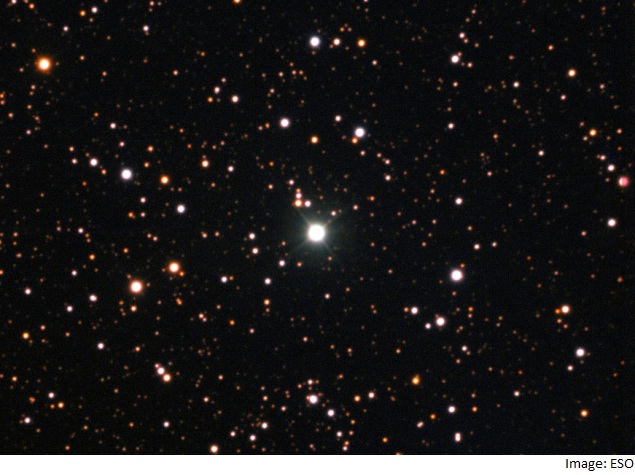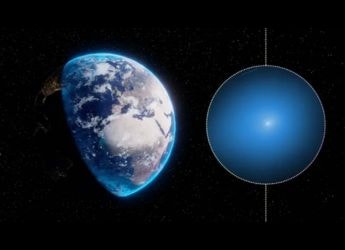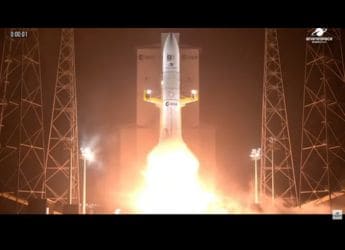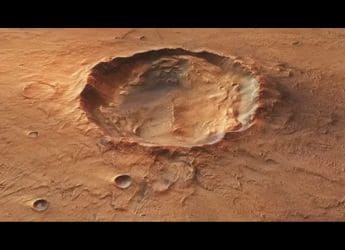- Home
- Science
- Science News
- Lithium Detected From Nova Gives Insight Into Chemical Evolution of Stars
Lithium Detected From Nova Gives Insight Into Chemical Evolution of Stars

Lithium is one of the few elements that is predicted to have been created by the Big Bang nearly 14 billion years ago.
But understanding the amounts of lithium observed in stars around us today in the universe has baffled astronomers.
Older stars have less lithium than expected, and some younger ones up to ten times more.
"It is a very important step forward. If we imagine the history of the chemical evolution of the Milky Way as a big jigsaw, then lithium from novae was one of the most important and puzzling missing pieces," said co-author Massimo Della Valle from Osservatorio Astronomico di Capodimonte, Naples, Italy.
The team of astronomers studied the nova Nova Centauri 2013 (V1369 Centauri).
This star exploded in the southern skies close to the bright star Beta Centauri in December 2013 and was the brightest nova so far this century - easily visible to the naked eye.
The very detailed new data revealed the clear signature of lithium being expelled at 2 million kilometres per hour from the nova.
This is the first detection of the element ejected from a nova system to date.
The mass of ejected lithium in Nova Centauri 2013 is estimated to be tiny but, as there have been many billions of novae in the history of the Milky Way, this is enough to explain the observed and unexpectedly large amounts of lithium in our galaxy.
Get your daily dose of tech news, reviews, and insights, in under 80 characters on Gadgets 360 Turbo. Connect with fellow tech lovers on our Forum. Follow us on X, Facebook, WhatsApp, Threads and Google News for instant updates. Catch all the action on our YouTube channel.
Related Stories
- Samsung Galaxy Unpacked 2025
- ChatGPT
- Redmi Note 14 Pro+
- iPhone 16
- Apple Vision Pro
- Oneplus 12
- OnePlus Nord CE 3 Lite 5G
- iPhone 13
- Xiaomi 14 Pro
- Oppo Find N3
- Tecno Spark Go (2023)
- Realme V30
- Best Phones Under 25000
- Samsung Galaxy S24 Series
- Cryptocurrency
- iQoo 12
- Samsung Galaxy S24 Ultra
- Giottus
- Samsung Galaxy Z Flip 5
- Apple 'Scary Fast'
- Housefull 5
- GoPro Hero 12 Black Review
- Invincible Season 2
- JioGlass
- HD Ready TV
- Laptop Under 50000
- Smartwatch Under 10000
- Latest Mobile Phones
- Compare Phones
- OnePlus 15R
- Realme Narzo 90x 5G
- Realme Narzo 90 5G
- Vivo S50 Pro Mini
- Vivo S50
- OPPO Reno 15c
- Redmi Note 15 5G
- Redmi Note 15 Pro 5G
- Asus ProArt P16
- MacBook Pro 14-inch (M5, 2025)
- OnePlus Pad Go 2
- Poco Pad M1
- Just Corseca Skywatch Pro
- Honor Watch X5
- Acerpure Nitro Z Series 100-inch QLED TV
- Samsung 43 Inch LED Ultra HD (4K) Smart TV (UA43UE81AFULXL)
- Asus ROG Ally
- Nintendo Switch Lite
- Haier 1.6 Ton 5 Star Inverter Split AC (HSU19G-MZAID5BN-INV)
- Haier 1.6 Ton 5 Star Inverter Split AC (HSU19G-MZAIM5BN-INV)

















